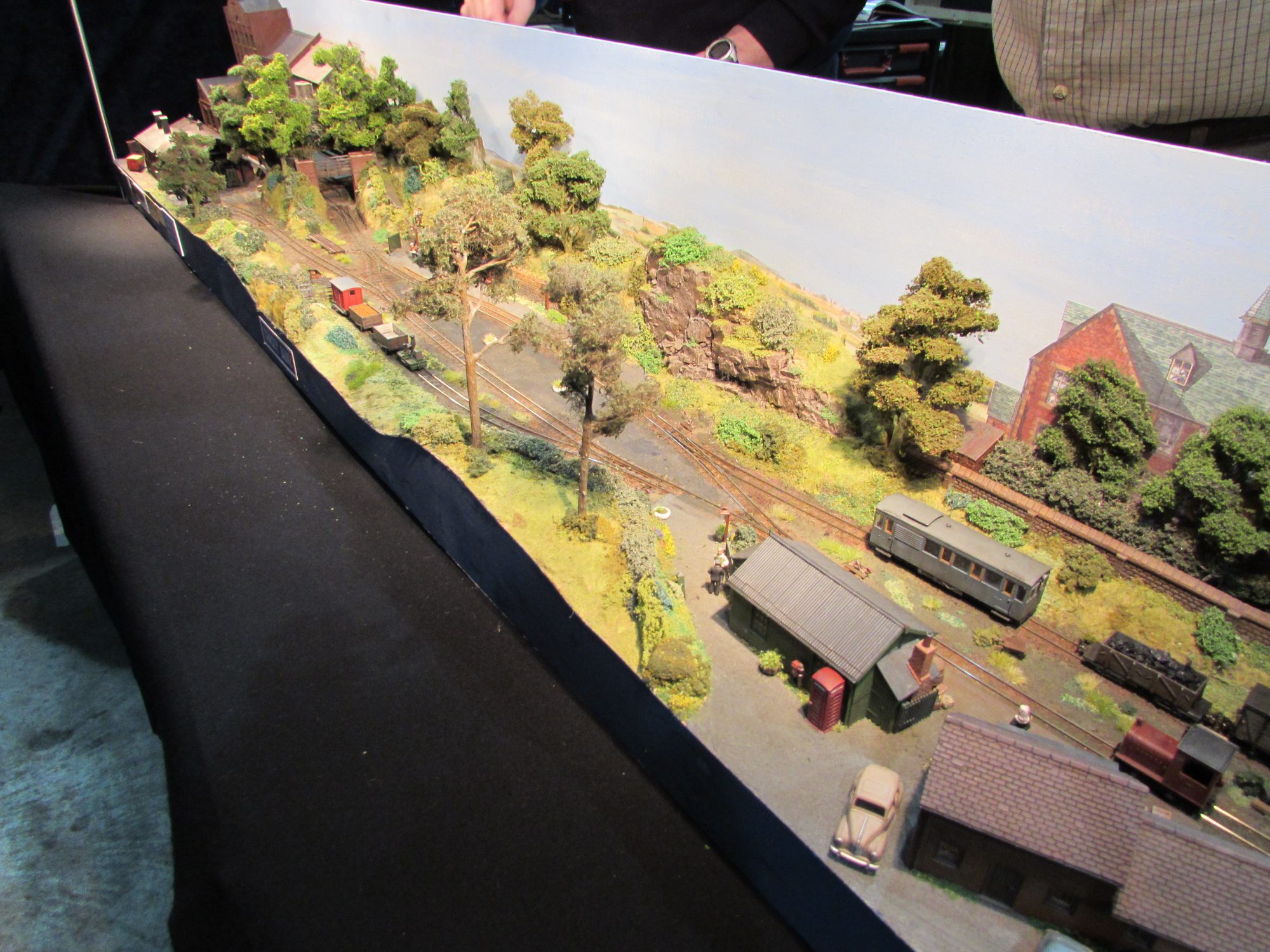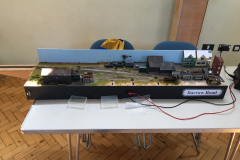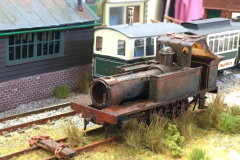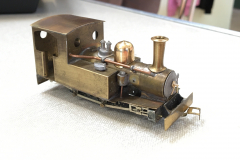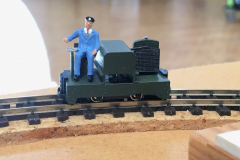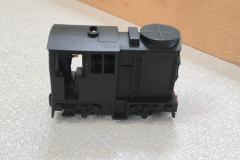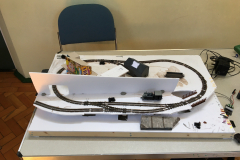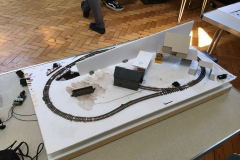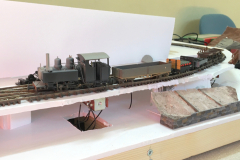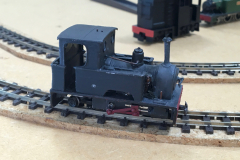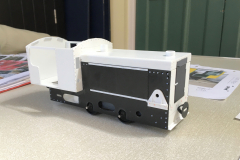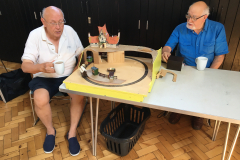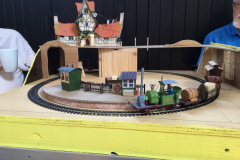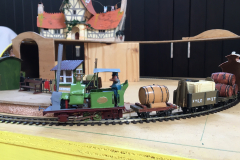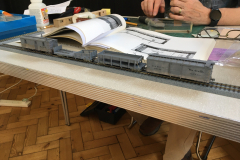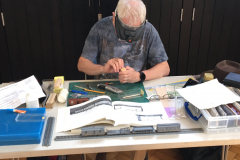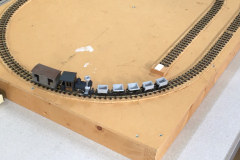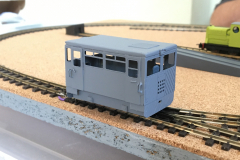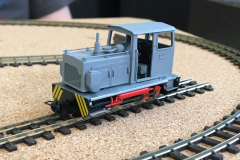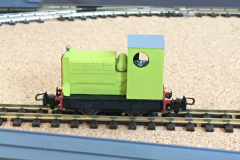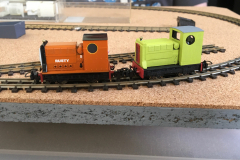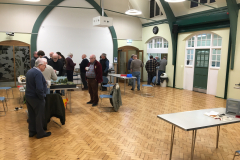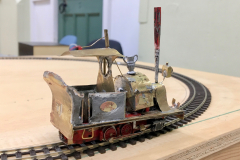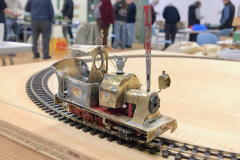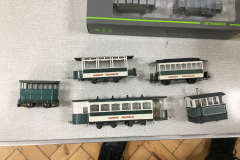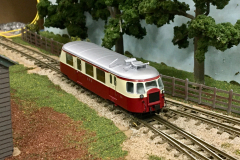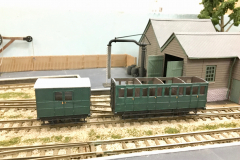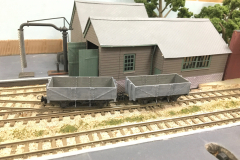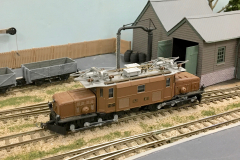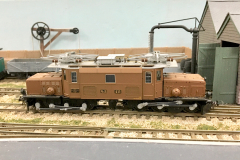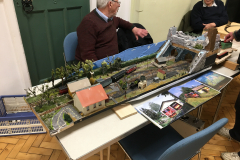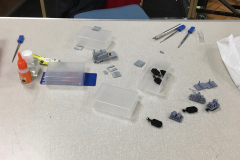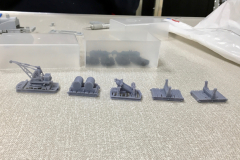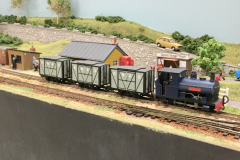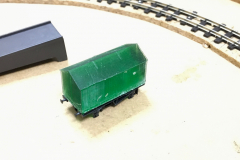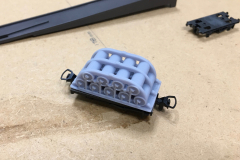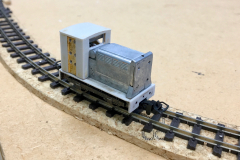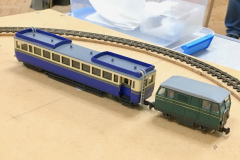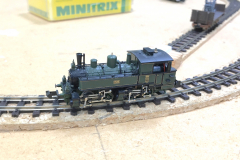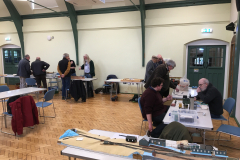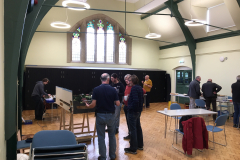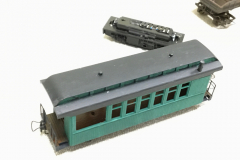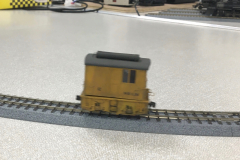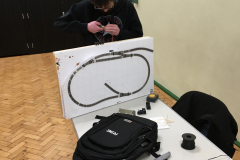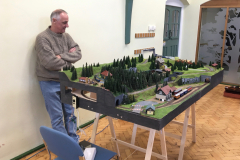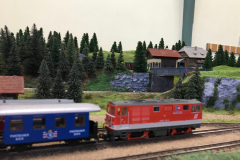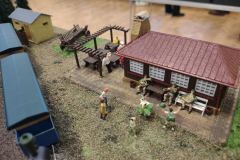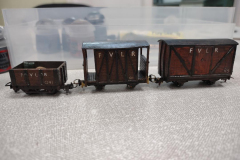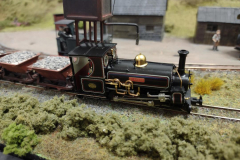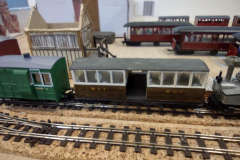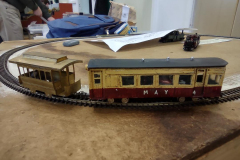Alec Matthews brought along his OOn3 layout Barrow Road (pic001). This has had a few more additions since the last meeting. These included a 3D printed Ravenglass & Eskdale 3′ gauge Manning Wardle as a scrapped loco, complete with open smokebox with interior details (pic002). Alec had also acquired a rather nice brass bodied 2-4-0T built for 9mm gauge on a Branchlines Hawk chassis (Pic003). There was a little debate of what this had been based on
, with the conclusion being a mix of Welshpool & Isle of Man Beyer Peacock locos, possibly with a replacement boiler by Bagnall or Hunslet.
Trevor Street brought along some of his latest modelling. First was a 3d printed 20hp plate frame Simplex running on a Kato Portram chassis (Pic004) . The other a Sentinel Doble locomotive (another 3D print) on a Kato tram chassis (pic005).
These ran on Peter Hardy’s test track with Peter’s Sharp Stewart, double Fairlie and K1 Garratt. Unfortunately I missed photographing Peter’s locos.
Joseph Jacks brought along his Snailbeach diorama (pic006). Latest developments are some mocked up buildings for the pit head and forge (pic007). The Bachmann Snailbeach Baldwin now runs round the layout having had its front pony truck removed (Pic008). The truck hasn’t gone to waste as Joseph has used this under the rear of his Kerr Stuart ‘Skylark’ (Pic009). He also had the chassis for his Hudson GoGo tractor which was awaiting work on the cad for a 3D printed body.
Moving up several scales David Wilcox brought along his latest SM-32 project. This is a model of the Sentinel loco ‘Nutty’ built in plasikard (pic010).
John Davies brought along his latest layout (pic011). Pipet Crewcorem is a 12mm gauge 5.5 mm scale Rowland Emmett inspired layout (Pic012). 0-4-0 loco ‘Nellie’ uses a Berlinerbahn 0-8-0 chassis with the outer axles removed. This is topped off with a scratch built brass body with plenty of lead to balance the very short wheelbase! Rolling stock and buildings have been constructed from card with some plastic barrels used on some of the wagons (pic013).
Adrian Hall brought along a selection of HOn3 maintenance of way vehicles (pic014). He was also reworking a number of wooden water car kits to make other works vehicles and crew cars during the meeting (pic015). Adrian has also brought along a selection of HOn30 stock that had a run on Peter Hardy’s test track(pic016).
Steve Mann brought along his test track. On it ran a Wasp railcar he had reworked from a poorly built 2nd hand purchase (pic017). The Wagonmaster – Narrow planet 3D body on Liliput 4 wheel diesel chassis – had progressed (pic018). Steve had also finished the Bachmann ‘Rusty’ conversion with Peco TWPS grids radiator that he has painted in an LNER green (pic109 &020).
Bob Taylor brought along his new test track. With help from Peter Hardy he proceeded to wire up the capacitor discharge unit and point motors (pic021). These were up and working by the end of the meeting, just needing the point motor pins cutting back.
Dave Marriott was also working on a project (pic022). This was a card mock-up of a loco shelter- essentially a ‘roof on sticks’ for a small industrial loco. Dave had brought along his Heljan Lyn Baldwin 2-4-2 to get the size right and the loco looked very much at home in its new accommodation, albeit temporary (pic023).
